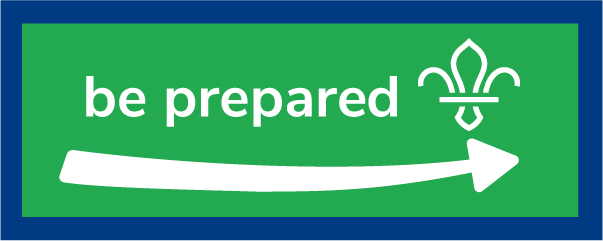Exploration mission
You’ll need
- Pens or pencils
- Scrap paper
- Sticky notes
Understand the mission
- The person leading the activity should explain that this activity helps any Scouts who are moving on to Explorers to find out as much as they can about the section they’re moving to, while getting to know some of the people there.
- They should explain that everyone has a part to play – even if they’re not ready to move on yet. Everyone’ll need to work together to come up with questions for people to ask, then wait to hear what the Scouts who are moving on find out.
Gather thoughts
- The person leading the activity should transform a wall into a sliding scale. One end should be for the most important questions to ask, the other should be questions that are less urgent, but would be nice to ask if there’s time.
It’s up to you how you represent this – you could use paper, chalk, or masking tape. Why not try numbers (for example, one to five) or emojis to represent levels of excitement?
- Everyone should split into small groups. The person leading the activity should give each group some pens and pencils and sticky notes (or pieces of scrap paper and sticky tack).
- Each group should spend about five minutes thinking of questions they’d like the Scouts who are moving on to ask Explorers. No question is too silly – this is a time for ideas, and people will think about the importance of the questions in a moment.
It’s up to them what they want to know – perhaps they’re interested in the practical (when and where do they meet?), the adventurous (what’s the most exciting thing they’ve done?), or the bizarre (what’s the weirdest activity they’ve tried?). It’s worth reminding people to ask about the Explorer Scout Young Leader scheme, too.
- Once the groups have thought of plenty of questions, they should take it in turns to share them with everyone. Everyone should work together to stick the questions to the scale – are they urgent, or can they wait for another visit if there’s not enough time?
- The person leading the activity should help the Scouts who are moving on gather the most essential questions. They may want to take the less urgent ones with them too, just in case there’s time – just make sure they’re in a separate pile!
Explore Explorers
- The person leading the activity should help the Scouts who are moving on to get in touch with their local Explorer Unit and arrange to visit one of their meetings. It’s a good idea to let them know that the Scouts would like to ask the Explorers some questions when they visit.
If you’re not already in touch with a Unit, check out the groupfinder on the home page of the Scouts website.
- The Scouts who are moving on should visit the Explorer meeting, making sure they remember to take the questions with them. While they’re there, they should try and get as many answers as they can by speaking to lots of different people.
- The Scouts who are moving on should join in with some of the activities the Explorers have planned – the adult volunteers should be able to help them find time to ask questions and also give activities a go.
- The next time the Scouts meet, the Scouts who are moving on should share what they learned on their visit. Which questions were they able to ask? What did people say? How many Explorers did they meet?
Reflection
Moving on to a new section can feel like a big step – but it’s also a chance to meet new people and try new things.
Turn your meeting place into a timeline, with zones for ‘past’, ‘present’, and ‘future’. Put a big piece of paper and some pens at each zone. Everyone should think about their time in Scouts – everything they’ve experienced so far (past), how they feel about moving on (present), and any hopes or expectations they have for their next step in Scouts (future). They should split into three groups; each group should spend one minute writing words or feelings on the paper at a zone, then the groups should swap until everyone’s had a chance to write at each zone.
Once everyone’s finished writing, someone from each group should share some of the things written at their zone. Everyone should think about the words the person shared – did people all feel the same, or were there differences? Often, people feel mixed things – they might be excited to try new things, but sad to leave what they know behind. Can anyone think of ideas that may make it easier to try new things?
Safety
All activities must be safely managed. You must complete a thorough risk assessment and take appropriate steps to reduce risk. Use the safety checklist to help you plan and risk assess your activity. Always get approval for the activity, and have suitable supervision and an InTouch process.
Make a list of question prompts to inspire anyone who’s struggling to think of questions. You could include some example questions (for example, ‘do you go on trips?’) or some question starters (for example, ‘have you tried…’ or ‘what was your favourite…’).
It’s OK if people feel unsure about visiting Explorers or asking them questions. They could visit in pairs, or they could find another way to ask questions, for example, by passing pieces of paper with the sticky notes on around so the Explorers can write down their answers. Work with the Explorer leader to make sure everyone feels supported and included.
All Scout activities should be inclusive and accessible.
Remember, to earn your Moving On Award (Scouts to Explorers), you’ll also have to go to both Scouts and Explorers for at least three weeks.
